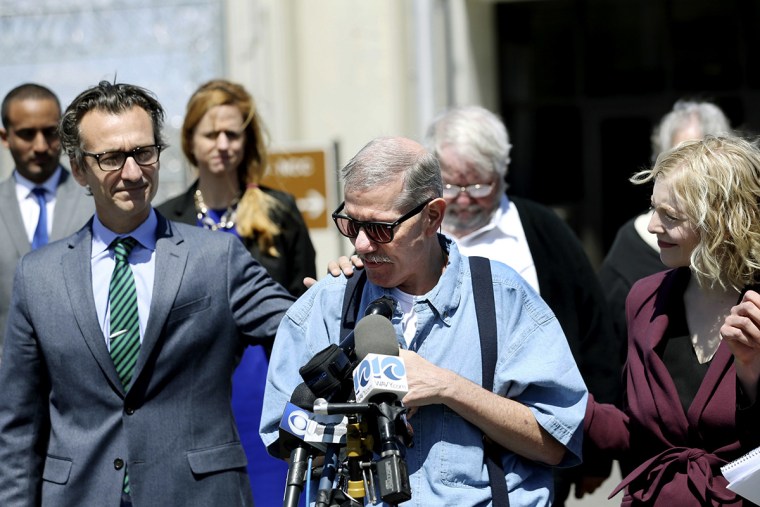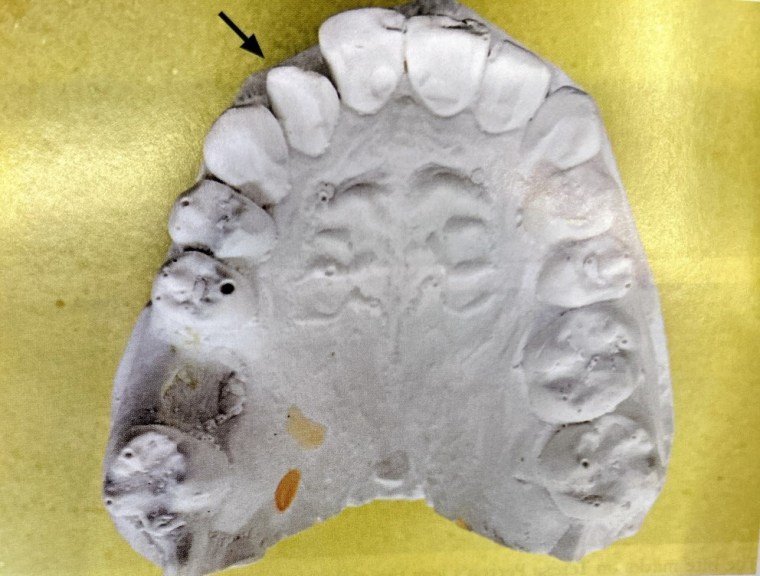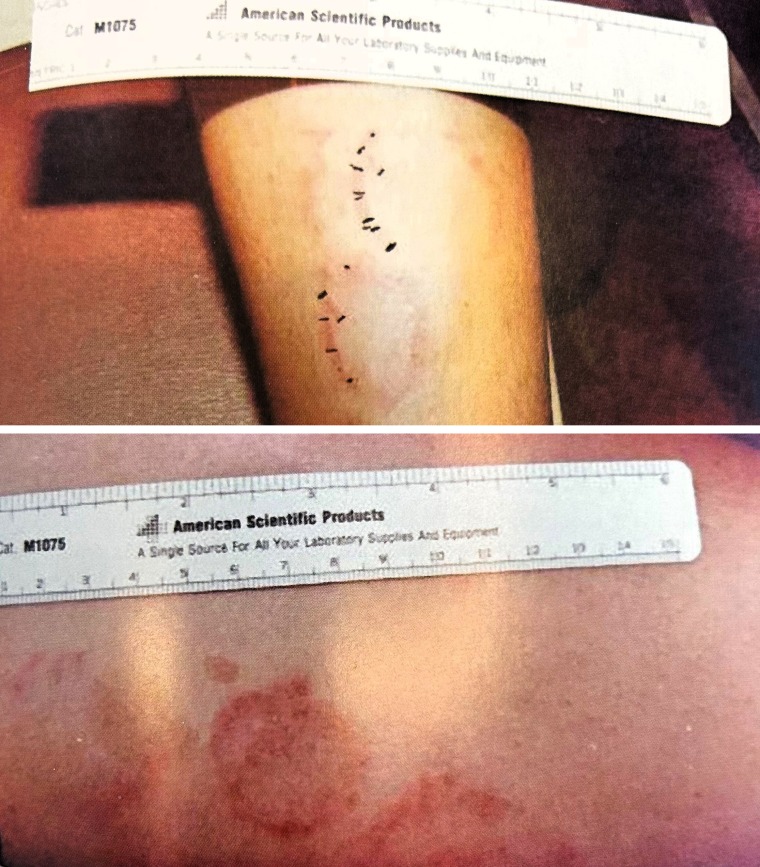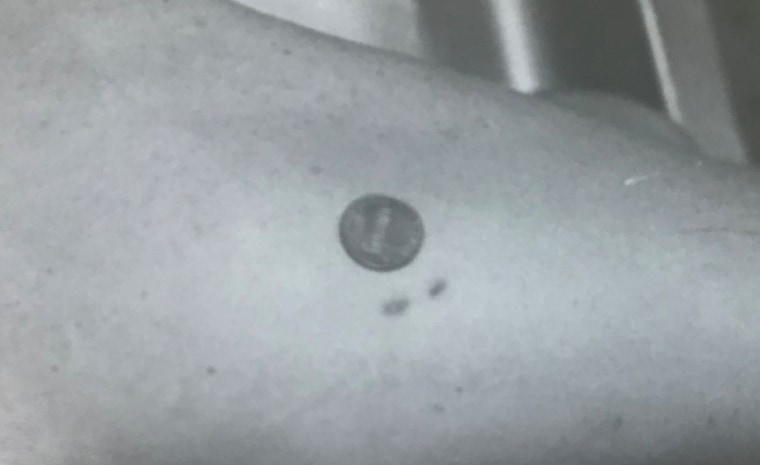
Keith Harward talks to reporters as he is released from Nottoway Correctional Center in Burkeville, Va., on April 8, 2016. (Image: Daniel Sangjib Min / Richmond Times-Dispatch via AP file)
Even now, as a free man, Keith Harward finds it hard to put into words what it felt like to sit in a courtroom, accused of a rape and murder he didn’t commit, while an “expert” confidently testified that bite marks on the victim matched his own teeth. “Sometimes I break down and bawl, because I can’t explain to you or anybody else, other than people who’ve been in my situation,” he shared in an interview with NBC News.
Harward’s innocence was proven with the help of DNA evidence, which led to the identification of the real killer. He became one of at least 36 people exonerated by the Innocence Project after being wrongfully convicted based on discredited bite mark comparisons.
A Flawed Practice with No Scientific Basis

A photo of a mold of Keith Harward’s teeth used in his trial. (Court exhibit)
Despite the lack of scientific evidence supporting its reliability, bite mark analysis has been used in thousands of cases, leading to numerous wrongful convictions. Four separate governmental scientific bodies, including the President’s Council of Advisors on Science and Technology and the National Institute of Standards and Technology, have concluded that bite mark analysis has no scientific basis. According to these reputable institutions, examiners cannot accurately identify the source of bite marks or even agree on whether an injury is a human bite mark.
Furthermore, studies have shown that self-proclaimed experts in bite mark analysis struggle to distinguish between human and animal bite marks. Additionally, bite marks on human skin can change over time due to healing or decomposition, making them even less reliable as evidence.
The Shocking Reality of Wrongful Convictions

Bite mark photos used in the trial of Keith Harward. (Court exhibit)
Despite these glaring flaws, bite mark analysis continues to be used in courtrooms. “There are still many people — and we don’t even know how many — still in jails because of bite mark testimony,” stated Adam Freeman, a forensic dentist and one of the profession’s leading critics of this discredited practice. The fact that lives and liberties are at stake makes it horrifying that bite mark evidence is still admissible in courts of law.
Innocence Project lawyer Chris Fabricant has fought to block the introduction of bite mark evidence in courtrooms across the country. However, none of the forensic dentists who testified based on debunked methods have faced any consequences for their role in the wrongful convictions.
Seeking Justice and Accountability

A photo presented as evidence of a bite mark in the trial of Charles McCrory. A penny is used to show scale. (Court exhibit)
One of the individuals still fighting for justice is Charles McCrory, who has spent 38 years in prison for a crime he claims he did not commit. Despite the bite mark expert in his case recanting his testimony, stating that he cannot determine whether the bite mark matched McCrory’s teeth, the Alabama courts have refused to release him. The court’s decision to leave the determination up to the jury disregards scientific evidence that visual matches of bite marks cannot be considered reliable.
The Innocence Project is currently pursuing appeals through the federal courts on behalf of Charles McCrory, refusing to give up until justice is served.
Bringing Awareness to a Broken System
Keith Harward, who was released from prison in 2016, now serves as a living reminder that there can be life after wrongful incarceration. He received $1 million in compensation from Virginia and currently leads a quiet life in rural North Carolina. However, he continues to speak out against bite mark evidence, which stole half of his life and prevented him from saying goodbye to his parents at their funerals.
“It’s garbage. It’s crap. It doesn’t mean anything,” Harward passionately states about bite mark analysis. He even attended a conference of forensic dentists to confront them about the validity of bite marks. While some dentists expressed sympathy, there are still those who cling to outdated practices.
Seeking Truth and Reform
The use of bite mark evidence in courtrooms persists, even though it lacks scientific credibility and has led to numerous wrongful convictions. Reform is urgently needed to protect innocent lives and ensure that evidence presented in courts is based on valid scientific principles.
To read the original article, visit Source link.
